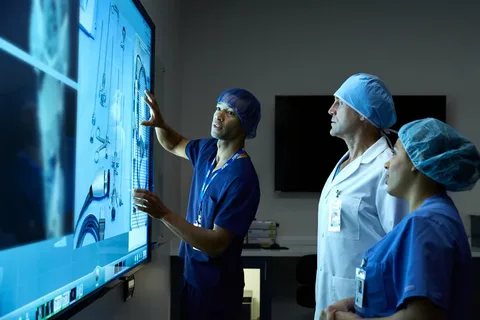J&J Releases Global Insights on Future of Surgical Software

Johnson & Johnson MedTech, a global leader in surgical technologies and solutions, released a report showcasing the expected benefits and ongoing challenges in digital surgery. The report, titled “Surgical software: what’s next in connected surgery,” shows near-unanimous agreement from clinicians that global data standards and interoperability will be key to unlocking the benefits of surgical software, from improved care to reduced costs.
With the increased availability of technology and demand for software and artificial intelligence (AI) to improve surgical outcomes, surgeons are often challenged to balance the potential impact new technology can make – and the complexity that each new tool brings with it into the OR. In response to surgeon feedback, Johnson & Johnson MedTech commissioned a survey of nearly 700 clinicians across 600 surgical facilities in 15 countries to put collective clinician voices behind the global, persistent challenges and their proposed path forward.
“This report confirms what we regularly hear from surgeons, who know that data-driven surgery will improve healthcare but are frustrated with the experience,” said Shan Jegatheeswaran, Global Head of Digital, Johnson & Johnson MedTech. “This isn’t just about software – it’s about what happens when every part of the operating room can finally speak the same language. The future of surgery requires a new kind of connection in which people, data, and tools move in synch to deliver better care.”
Surgical software shows potential, but complexity is limiting its impact
Software, AI solutions, and other digitally-driven adoptions have improved physician learning, patient outcomes, and costs related to surgery, and more than 95% of surgeons say that better surgical software would improve care, according to the study.
Realizing the benefits of data-driven surgery requires access to data and broad adoption of solutions that provide insights. However, clinicians say they are challenged in both areas. The survey found that 97% of surgeons say they cannot access or use patient data in a timely way, and hospitals that have deployed surgical software only use the technology in about 50% of cases due to cumbersome experiences and insufficient connectivity.
Clinicians say that the sheer number of technologies in the OR only adds to the challenge. The average operating room (OR) uses more than seven software solutions, more than four hardware device manufacturers, and more than five data streams, with respondents describing the current digital OR as “a patchwork quilt of different solutions” resulting in a “siloed” and “archaic” experience.
A “unified hub” has the potential to speed outcomes
Clinicians are optimistic about the path forward: 98% believe the key to unlocking broader benefits and a better surgical software experience is a system of global data standards and software interoperability. They are asking that “the same interoperability that exists in the consumer space” be brought to the surgery experience, according to the study.
Respondents believe that a “unified hub” is a solution that would provide a trusted environment – not only to accelerate innovation, but also to provide connectivity for seamless, timely, compliant access to data and insights.







